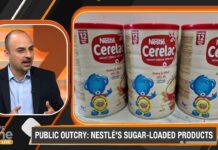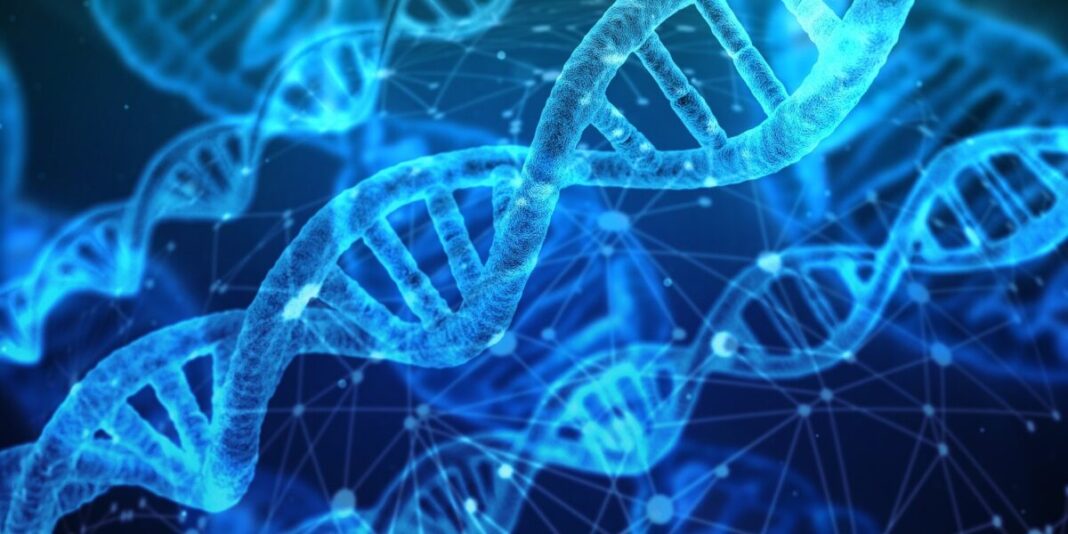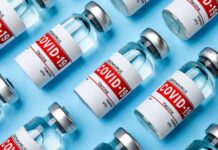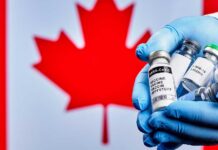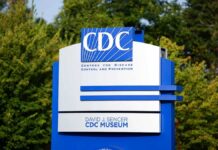It’s been assumed that the COVID shots contained only RNA, but researchers have also discovered the presence of DNA fragments. Not only should the DNA not be there—indicating a significant contamination issue—but the discovery has also exposed the entire proprietary blueprint of how the RNA is made.
Story at a Glance
- Microbiologist Kevin McKernan and his team recently discovered simian virus 40 (SV40) promoters in Pfizer’s and Moderna’s bivalent mRNA COVID shots.
- SV40 has long been suspected of causing cancer in humans.
- DNA contaminants may have the ability to alter the human genome. One of Pfizer’s vials also had an SV40 promoter with a nuclear localization sequence (NLS), a 72 base-pair insertion that makes the promoter “much more aggressive and also drives the sequence into the nucleus” of the cell.
- DNA contamination is a warning sign that endotoxin, which causes anaphylaxis when injected, may be present.
- A cinnamycin-resistant gene is also included in the sequencing vector, and it’s unclear if or how this might impact human health. In a worst-case scenario, it could make your microbiome resistant to antibiotics.
In the video above, Jessica Rose, who holds a doctorate in computational biology, interviews microbiologist Kevin McKernan on “Good Morning CHD.” McKernan’s team recently discovered1,2,3,4 simian virus 40 (SV40) promoters in Pfizer’s and Moderna’s bivalent mRNA COVID shots. For decades, SV40 has been suspected of causing cancer in humans.5 As explained in the abstract, posted on OSF Preprints in April 2023:6
“Several methods were deployed to assess the nucleic acid composition of four expired vials of the Moderna and Pfizer bivalent mRNA vaccines. Two vials from each vendor were evaluated … Multiple assays support DNA contamination that exceeds the European Medicines Agency (EMA) 330 ng/mg requirement and the FDA’s 10 ng/dose requirements.”
Equally—if not more—troubling, these DNA contaminants can also alter the human genome. As Mr. McKernan explains, genomic sequencing involves reading the letters of the genome, A, T, C, and G, which make up the DNA code. Both DNA and RNA can be sequenced in this manner.
DNA can be likened to a copy of the hard drive of your cell, while RNA is like your task manager, dictating the software program being run at a given moment. When you sequence RNA, you get a sense of what the cell is being instructed to do, while sequencing DNA tells you everything the cell could possibly do if the proper instructions are present.
COVID Shots Contain Both RNA and DNA
It’s been assumed that the COVID shots contained only RNA, but using genomic sequencing, Mr. McKernan discovered they contain DNA fragments as well, and there really should not be any. The RNA is basically copied, or “Xeroxed,” off the DNA, and only the RNA should be in the final product.
As noted by Mr. McKernan, the DNA used is proprietary. “They don’t want people to know all the tricks they put in the DNA to drive maximum amount of Xeroxing, if you will.” But what popped out during sequencing was the entire sequencing vector, “which shows us everything they’re doing to drive the expression of this RNA,” Mr. McKernan says.
So we now know they’re using a T7 promoter, an SV40 promoter, an antibiotic-resistance gene, that the replication is bacterial in origin, and more. As Mr. McKernan explains, you need vast amounts of DNA to get the amount of RNA required for these shots. To get the DNA required, a piece of DNA that codes for RNA in a circle, called a plasmid, was created and then reproduced inside E. coli in a huge vat.
Plasmids are unique in that they have an origin of replication that allows the DNA to copy itself several hundred times inside every cell of the E. coli. Since bacteria double every 20 minutes, you get exponential amplification of the DNA overnight.
The DNA must then be extracted from the E. coli and purified. Once that’s done, a T7 in vitro transcription reaction is run on the purified DNA, which copies the RNA off that DNA.
The plasmid that is put in with the E. coli—the sequencing vector—is the blueprint for how the RNA is made, and this is what Mr. McKernan found, in its entirety, in the vials. It really should not be there. Only the purified RNA should be present.
Regulatory agencies have an acceptable upper limit for double-stranded DNA (dsDNA) in medical products. Still, the amount of DNA Mr. McKernan found was orders of magnitude higher than those thresholds.
The arbitrary limit for dsDNA set by the European Medicines Agency (EMA) is 330 nanograms per milligram (ng/mg), but Mr. McKernan suspects that limit isn’t stringent enough because they probably didn’t consider that it might include replicable DNA. In all likelihood, this limit was primarily based on concerns about E. coli DNA, which might get mixed in.
In a May 20, 2023, Substack article,7 Mr. McKernan also pointed out that Pfizer itself submitted evidence to the EMA showing sampled lots containing anywhere from 1 ng/mg to 815 ng/mg of DNA, so regulators knew they had quality control problems from the start. In Mr. McKernan’s testing, the highest level of DNA contamination found was 30 percent, which is rather astounding.
Endotoxin Concerns
Mr. McKernan also explains that one of the primary concerns when pulling plasmids out of E. coli is the fact that endotoxins frequently tag along. Lipopolysaccharide (LPS), an endotoxin, sits on the outside of gram-negative bacteria such as E. coli. When injected, endotoxin can cause anaphylaxis, and life-threatening anaphylaxis just so happens to be among the most commonly reported side effects of these shots. According to Mr. McKernan,8 “Whenever we see DNA contamination, like from plasmids, ending up in any injectable, the first thing people think about is whether there’s any E. coli endotoxin present because that creates anaphylaxis for the injected … You can see people get injected with this and drop. That could be the background from this E. coli process of manufacturing the DNA.”
What Is the SV40 Promoter For?
As mentioned earlier, the sequencing vector found also included an SV40 promoter. To be clear, this is not the whole virus. It’s only the promoter, meaning a specific portion of the viral DNA essential for gene expression. The problem is that this particular promoter is known to be problematic.
SV40 promoters have been studied for years and are known to trigger cancer when encountering an oncogene (a gene that can potentially cause cancer). Moreover, Mr. McKernan found that one of the Pfizer vials had not just one but two SV40 promoters.
One of them had a nuclear localization sequence (NLS) that the other didn’t have—a 72 base-pair insertion for a nuclear localization sequence (NLS) that makes the promoter “much more aggressive and also drives the sequence into the nucleus” of the cell. NLS is a sequence that tags a given protein for import into the cell nucleus, further heightening the risk of genome integration.
You can get [genome] integration off these vectors alone, and if vectors have things that localize in the nucleus, then odds go up tremendously that there could be genome integration going on.
— Kevin McKernan
Now, this second, more aggressive promoter was only found in one of the two Pfizer vials tested, even though the vials were from the same lot. What might account for this remarkable quality discrepancy? At a bare minimum, it suggests Pfizer is changing its manufacturing on the fly, without oversight. Changing the plasmid used is a major change in manufacturing that really should require regulatory oversight, Mr. McKernan notes.
As for why any of the SV40 promoters are in there, Mr. McKernan is sure it was part of an intentional design, as these promoters have a long research history.
Genome Integration Can Occur in More Ways Than 1
The reason NLS is so concerning is that it can drive genome integration even in the absence of LINE-1 (long interspersed nuclear elements 1), which allows for insertions, deletions, and rearrangements within the genome through reverse transcription.
“If you’re injecting this much DNA, you don’t need LINE-1 at all. You can get integration off these vectors alone, and if vectors have things that localize in the nucleus, then odds go up tremendously that there could be genome integration going on,” Mr. McKernan says.
Cytoplasmic transfection can also allow for genetic manipulation because the nucleus disassembles and exchanges cellular components with the cytosol during cell division.
Even if genetic modification does not occur, the fact that you’re getting foreign DNA into your cells can pose a risk. Partial expression could occur, for example, or it might interfere with other transcription translations already in the cell.
How Might Cinnamycin Resistance Gene Affect Human Health?
Ms. Rose and Mr. McKernan also discuss how the cinnamycin-resistant gene found in the sequencing vector might impact human health. What happens if this gets into a patient and encounters bacteria? Will it make that bacteria resistant to cinnamycin (a tricyclic antibiotic)?
“While speculative, at the moment, we would assume yes,” Mr. McKernan says. “Plasmids get absorbed by bacteria at 37 degrees (Celsius) temperature, which is the temperature of your gut … and if they can confer any selective advantage, then they’re going to replicate and become the dominant species in your microbiome.”
Possibly, it might require the patient to be on an antibiotic when this occurs, as this is what would give the bacteria the selective advantage. Still, antibiotic use is quite common, so this is not a concern that should be discarded off hand. Potentially, these bivalent jabs may be spreading antibiotic resistance through the injected population, which could have grave consequences.
Will Your Microbiome Produce Spike Protein?
A related question is whether your microbiome might also produce spike protein permanently. Mr. McKernan suspects the bacteria will make spike RNA, but bacterial ribosomes don’t have the right equipment to read that RNA, so they probably won’t be able to translate it.
That said, bacteria are frequently absorbed by mammalian cells in a process called bactofection, a known gene transfer technique.9 So this may result in your cells producing spike protein.
The RNA in the COVID jab is also modified to resist breakdown, so you really have two versions of the spike protein that can persist longer than anticipated, and the spike protein, of course, is the most toxic part of the virus that can cause your body to attack itself. Mr. McKernan says:
“The real concern is we’ve got an amplifiable piece of DNA that can replicate in bacteria. Your body is loaded with bacteria [and] it’s going to start replicating this DNA once it’s inside of them, and we don’t know what’s going to happen after that.
“It could make RNA, it could get absorbed into mammalian cells, it could be killed and completely gotten rid of. But the DNA shouldn’t be there to begin with. So we have to start monitoring how much DNA is actually in lot to lot. What is its length? Is it circular? And how much of it can we tolerate?”
Mr. McKernan Calls on Scientists to Reproduce His Results
On his Substack, Mr. McKernan published all the details10 scientists and labs would need to rapidly and inexpensively replicate his investigation and assess the dsDNA contamination of COVID shots around the world. He’s urging researchers to do so.
According to Mr. McKernan, one team has already contacted him, saying they found a sequencing vector in the original monovalent COVID shots. Their findings will hopefully be released shortly.
Originally published June 26, 2023, on Mercola.com
References
- 1, 6 OSF Preprints April 10, 2023, Edited April 11, 2023 DOI: 10.31219/osf.io/b9t7m
- 2 Twitter KanekoaTheGreat May 20, 2023
- 3, 7 Anandamide (Kevin McKernan) Substack May 20, 2023
- 4 The Healthcare Channel May 22, 2023
- 5 Expert Rev Respir Med October 2011; 5(5): 683-697
- 8 The Health Care Channel, Greer Journal Why the COVID “mRNA” vaccines are actually DNA gene therapies that must be removed from the market
- 9 Gene Therapy September 15, 2005; 13: 101-105
- 10 Nepetalactone Newsletter March 22, 2023















